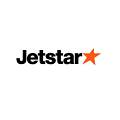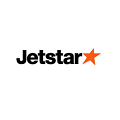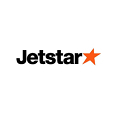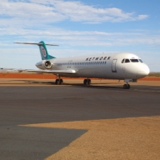Title Page
-
Document No.
-
Audit Title
-
Client / Site
-
Conducted on
-
Prepared by
-
Location
-
Personnel
-
Airport:
-
Date:
-
Stream Leads:
-
Port Pack Form Guidance:
This Port Package Form comprises two parts (Part A) ‘Port Package Evidence’ and Part (B) ‘Port Specific SOP Compliance’ and is distributed by the Manager Aviation Compliance and Risk to Stream Leads for completion.
Stream Leads complete parts A and B by providing responses and evidence to demonstrate port readiness and by verifying Standard Operating Procedure (SOP) compliance against CASA legislative requirements.
Once completed, this Package is collated by the Manager Aviation Compliance and Risk for the purposes of verification and testing using the Port Validation Checklist. Once validated, the Port Package will be filed and made available for audit purposes (as required). -
Once complete, email the Port Pack Form with relevant sections completed
(including supporting evidence) to JQSafetycompliance@jetstar.com
PART A – PORT PACKAGE EVIDENCE
-
Part A Guidance:
The purpose of Part A is to provide Stream Leads with a structured format to notate responses to key port introduction elements and append supporting documents and photographic evidence to demonstrate port readiness.
Complete Part A by reviewing the actions listed and notating responses and/or providing documents and photographs as requested in the form.
Refer to the legend on page 1 for checklist icons and instructions.
1. Port Readiness Chair
-
1.1 Notate the date the change was raised and the change reference number allocated
-
1.2 Provide report from Starsafe for the CAT A change that was raised to support Port Intro from Starsafe. Report must show change as ‘endorsed’ by relevant postholders or their delegates, with all relevant attachments ‘ticked’ as applicable
-
Add signature
-
1.3 Provide a copy of the latest risk register to support the port intro and notate the overall risk profile. Note: RA to be reviewed post the port validation inspection
-
Add signature
2. Airports (including Procurement)
-
2.1 Participate in the port readiness risk assessment and (where practical) leverage airport operations experience from the airport
-
Add signature
-
2.2 Notate the Jetstar approved GHA(s) for the provision of passenger services, ramp handing and waste removal
-
2.3 Notate if any ground handing services are subcontracted. If so, notate what services are subcontracted and to whom, also specify if subcontractors are specified in SGHA
-
2.4 Provide a copy of the executed SGHA between relevant contractors. If not executed provide draft agreements and notate target execution date
-
Add signature
-
2.5 Provide a copy of the organisational structure for the relevant GHA(s) and notate key positions for the management and oversight of Jetstar operations
-
Add signature
-
2.6 Notate how many staff will be quarantined for Jetstar services (separate passenger service and ramp handling staff numbers)
-
2.7 Provide a copy of the complete Training Plan and Matrix
-
Add signature
-
2.8 Notate who the approved trainers are (both passenger service and ramp handing) and provide training records and certificates for the trainers
-
Add signature
-
2.9 Provide training matrix for all GHA staff and notate whether training records are current, complete and compliant with OM15 requirements for all mandatory (including DAMP) and aircraft specific training
-
Add signature
-
2.10 Provide sample of aerobridge training records and notate whether records are current and complete
-
Add signature
-
2.11 Provide photos of documentation held onsite in passenger and ramp offices and notate version / issue date of the below documents:
- OM15
- OM14
- SERP
- Airport Emergency Plan
-
Add media
-
Add media
-
Add media
-
Add media
-
2.12 Notate frequency of airport emergency excersises, including dates of previous and upcoming excersises
-
2.13 Photograph the Airport Authority’s Airport Emergency Plan, Operations Manual, Security Manual and Wildlife Manual and notate currency of these manuals
-
Add media
-
2.14 Notate whether passenger service and ramp handing staff have access to JEN and know how to submit an OSCAR
-
2.15 Provide copies of latest read and sign sheets for passenger service and ramp handing staff and notate compliance with OM15 requirements
-
Add signature
-
2.16 Notate whether passenger service and ramp handling staff have hardcopy OSCAR forms available
-
2.17 Provide photographs of latest flight files and notate whether flight filing archiving is in accordance with OM15 requirements
-
Add media
-
2.18 Notate the check-in counters Jetstar will utlise and how the Airport Authority assigns the counters (permanent basis / common user)
-
2.19 Notate when check-in counter scales were last calibrated and when the next due date is. Provide photographs of calibration stickers and complete scale calibration certificates
-
Add signature
-
Add media
-
2.20 Notate whether all counters have required DG and LAGS signage in place and provide photographs
-
Add media
-
2.21 Notate whether manual check-in pack has been made available to staff and other important equipement (e.g.smartphones for CLC)
-
2.22 Notate any other services providers that interface with Jetstar aircraft i.e. provision of Fixed Electrica Ground Power (FEGP) and fixed air conditioning on aerobridge/bays and provide sample training records
-
Add signature
-
2.23 Notate whether Jetstar measure-up units (without sclaes) are available in close proximity to the boarding gate and photograph
-
Add signature
-
2.24 Provide a copy of the airport apron plan showing bay numbers and aircraft type approved to park on the bay
-
Add signature
-
2.25 Notate how many bays (including bay numbers) are available and suitable for Jetstar operations i.e. line markings in place. Notate which bays have aerobridges fitted (and specify if single or dual bridges)
-
2.26 Notate what bays have NIGS fitted and sevices available on the bay (if FEGP available advise KVA)
-
2.27 Provide photographs of bay infrastructure, including but not limited to:
- Bay markings & signage
- Fueling hydrants
- NIGS
- FEGP
- Aircondition
- Bridges
- Emergency fuel stop button
- Fod collection bins -
Add media
-
Add media
-
Add media
-
Add media
-
Add media
-
Add media
-
Add media
-
Add media
-
2.28 Notate who owns and services GSE (including GPUs)
-
2.29 Provide a copy of the GSE asset register and notate compatiable equipment
-
Add signature
-
2.30 Provide photos of each type of GSE listed below, sample to include 1x image of GSE, 1x image of GSE permit, 1x image of GSE service certificate sticker, 1x image of fire extinguisher showing certification tag, to confirm GSE is serviceable
- Pushback tug (towbar &/or towbarless)
- Compatible towbar
- Pallet Loader
- Baggage belt
- Water truck (including current water quality certs)
- Lavatory truck
- GPUs (all units to be photographed), also photograph calibration stickers alongside GPU dials & photograph leads taking note if there are dust covers for the leads
- PCA / Aircon truck (suitable for aircraft type)
- Catering truck
- Mobile stairs truck
- Passenger Assistance Device (Ambi Lift or High Lift truck)
- Passenger Bus -
Add media
-
Add media
-
Add media
-
Add media
-
Add media
-
Add media
-
Add media
-
Add media
-
Add media
-
Add media
-
Add media
-
Add media
-
2.31 Provide a sample of maintenance history for GSE listed above, one of each type of GSE & notate frequency of maintenance activity and whether records are current & complete
-
Add signature
-
2.32 Provide a copy of GHA’s GSE preventative maintenance schedule & notate frequency of servicing, i.e. daily, monthly, 3 monthly, 6 monthly & annually
-
Add signature
-
2.33 Provide maintenance records for the following items (where applicable) and notate frequency of servicing:
- Aerobridges
- FEGP
- Airconditioning
- NIGS
-
Add signature
-
Add signature
-
Add signature
-
2.34 Provide latest audit reports on flight handling observation including relevant ISAGO, ASPA &/or TSPA to validate compliance with JQ requirements. Notate the audits performed (ISAGO, ASPA, TSPA ect) and number of findings identifed in each report
-
Add signature
-
2.35 Notate who the cut-over support teams onsite will comprise to provide support and oversight
-
2.36 Complete Part B, Section 1 of this form
3. Flying Operations (including Navigation Services)
-
3.1 Participate in the port readiness risk assessment and (where practical) leverage flying operations experience into / out of the airport
-
Add signature
-
3.2 Notate the date the airport was categorised by the ARAC and the categorisation of the Main Airport
-
3.3 Provide the following ARAC documentation and notate whether the forms have been compiled in accordance with OM2 requirements:
- Airport Assessment report (JQ-ARA-001) for destination and alternates
- CFIT review document
- ARAC Meeting Minutes
- ARAC Approval sign-off (JQ-ARA-004) for destination and alternates
- New Airport/Route Assessment Checklist (JQ-ARA-003)
- New Airport Physical Entry checklist (JQ-ARA-002) - if required
- OM1 Table 7.4 review, including ETOPS approvals
- OM2A review/creation
- OM4 review/creation
- FSO development -
Add signature
-
3.4 Notate ground handling capabiliy synopsis at designated altenate ports (destination & ETOPS)
- Evidence of notification to diversion support provider of intended ops
- Include alternate port risks in port readiness risk assessment -
Add signature
-
3.5 Notate required information against the following items
- What electrical lighting is in place on the runway?
(e.g. 60m spaced HIRL, 15m spaced CL RWY 16R/34L, 30m spaced CL, with standby power available 1 second cutover runway associated lighting, 15sec cutover other lighting)
- What electrical lighting is in place on the runway?
(e.g. Centerline lighting, Edge Lighting, Runway Guard Lights, ATC controlled and standby power available)
- What electrical lighting is in place for obstacles?
(e.g. Promulgated in AIP and assessed. Additional promulgated via NOTAMs)
- What visual slope guidance is in place?
(e.g. PAPI 3.0 degrees on all runway directions, Standby power available)
- What navigation aid and instrument procedures are in place?
(e.g. ILS all runways (CAT II), VOR DME Rwys 06R/24L Source AIP and Jeppesen)
- What QNH source / approved Met observers are used?
(e.g. Using Airport infrastructure, Office responsible for TAF and METAR information is Japan MET Office – Kansai Airport. 30hr TAF and 30min Trend Forecasts available H24. Actual conditions available via ATIS and ATC H24)
- What AIP data is available on obstacle gradients, movement areas and hazards?
(e.g. data obtained from several sources in accordance with Jetstar Standard Operating Procedures)
- Are movement areas suitable, i.e. is pavement concession required?
(e.g. assessed as MTOW capable for B787)
4. Customer Excellence (including Catering)
-
4.1 Notate the service providers contracted to provide catering
-
4.2 Provide a copy of the executed SGHA with the contractors. If not executed provide draft agreement and notate target execution date
-
Add signature
-
4.3 Notate when the catering company will complete safety awareness and aircraft type specific door training
5. Engineering (including Cleaning)
-
5.1 Notate the Part 145 Organisation who will be providing maintenance and engineering support at the port
-
5.2 Provide executed SGHA (as applicable). If not executed provide draft agreements and notate target execution date
-
Add signature
-
5.3 Notate who the cut-over support teams onsite will comprise to provide support and oversight
-
5.4 Notate the service providers contracted to provide cleaning
-
5.5 Provide a copy of the executed SGHA with the contractors. If not executed provide draft agreement and notate target execution date
-
Add signature
-
5.6 Notate whether the cleaning supplier is compliant with cleaning SOP and uses approved cleaning products as detailed in the AMPM
-
5.7 Notate any altenative cleaning products that the CAMO has authorised for the cleaning supplier
-
5.8 Notate whether the cleaning supplier retains the MSDS for cleaning products for fluid traceability and audit purposes
-
5.9 Notate whether cleaning supplier has the latest AMPM and photograph the segregation of cleaning chemicals for use on Jetstar aircraft
-
Add media
6. Safety
-
6.1 Provide previous Starsafe report on any OSCARs, audits or investigations relevant to the port and notate number, type and status of findings
-
Add signature
-
6.2 Provide IFQP fuel quality and safety inspection report on the fuel supplier and into-plane provider. Notate when the last IFQP audit was conducted and when the next IFQP audit is due. In addition, notate the status of all findings raised in the IFQP report
-
Add signature
-
6.3 Provide a copy of the current port SERP
PART B – PORT SPECIFIC SOP COMPLIANCE
-
Guidance:
The purpose of Part B is to for Stream Leads with a structured format to verify SOP compliance against CASA legislative requirements specific to the port that is being introduced.
Complete Part B by reviewing legislative requirements in the first column and verify the SOP reference provided is current and correct, i.e. the SOP referenced satisfies the legislative requirement). If current and correct tick the check box. If the SOP reference is incorrect i.e. references incorrect SOP or is no longer current do not check the box and notate the correct SOP reference in the ‘Comments’ column.
Part B of this form is to be completed by nominated Stream Leads to confirm Compliance against CASA legislative requirements specific to:
1. Front of House (Pax Services) Requirements
-
Acceptable procedures for identification of and seat allocation for handicapped persons (CAO 20.16.3.15)
SOP Reference
-
In accordance with Jetstar Standard Operating Procedures.
Operations Manual Volume 12: Cabin Crew Policy and Procedures - Section 4.5.10 'Permanent or Temporary Disabilities', Section 4.5.11 'suitability of Passengers for emergency Exit Seats', Section 5.3 'Special Handling Passengers' -
Operations Manual Volume 15: Airport Policy and Procedures - Section 2.12 'Customers with Specific Needs'
-
Seat allocation for infants and children
(CAO 20.16.3.13)
SOP Reference
-
In accordance with Jetstar Standard Operating Procedures.
Operations Manual Volume 12: Cabin Crew Policy and Procedures - Section 4.5.9 'Able Bodied Passengers' , Section 4.5.11 'Suitability of Passengers for emergency Exit Seats', Section 5.1 'Carriage of Infants and Children'
-
Operations Manual Volume 15: Airport Policy and Procedures – Section 2.8.2 ‘Seating Policy Procedure’, Section 2.8.5 ‘Infants Special Seating Requirements’
-
Scales for weighing baggage and cargo
(CAO 82.5, Appendix 1, Section 1 Facilities)
SOP Reference
-
In accordance with Jetstar Standard Operating Procedures.
• Operations Manual Volume 15: Airport Policy and Procedures - Section 10.8 'Calibration of Check-In Scales'
-
Appropriate system for control of loose articles in cabin (carry-on baggage)
(CAO 20.16.3.9)
SOP Reference
-
In accordance with Jetstar Standard Operating Procedures.
• Operations Manual Volume 12: Cabin Crew Policy and Procedures - Section 4.5.16 'Stowage of Loose Articles'
2. Back of House (Ramp Handling) Requirements
-
Aerobridge/directions to board (Day/Night)
(CAR 221)
SOP Reference
-
In accordance with Jetstar Standard Operating Procedures.
Operations Manual Volume 15: Airport Policy and Procedures - Section 2.11.3 'Boarding' -
Staff in attendance with passengers (Day/Night) (CAR 221)
SOP Reference
-
In accordance with Jetstar Standard Operating Procedures.
Operations Manual Volume 15: Airport Policy and Procedures - Section 2.9.5 'Passenger Marshalling Requirements and Safety' and Section 3.10.10.5 'Passenger Marshalling System' -
Protection from jet blast
Clear of taxiing aircraft
Clear of moving vehicles (Day/Night)
Pax safety during Night/Rain
(CAR 221)
SOP Reference
-
In accordance with Jetstar Standard Operating Procedures.
Operations Manual Volume 15: Airport Policy and Procedures - Section 2.9.5 'Passenger Marshalling Requirements and Safety' and 3.1.5.4 'Jet Blast' and 3.1.5 'Aircraft Hazards'
-
Operations Manual Volume 15: Airport Policy and Procedures - Section 6.7 'Severe Weather Alerts – Policy and Procedures'
-
Positioning of tankers/hydrants (Day/Night)
(CAR 221)
SOP Reference
-
In accordance with Jetstar Standard Operating Procedures.
Operations Manual Volume 15: Airport Policy and Procedures - Section 3.12 'Fuelling Aircraft'
-
Safety routes available for emergency evacuation
(CAR 221)
SOP Reference
-
In accordance with Jetstar Standard Operating Procedures.
Operations Manual Volume 15: Airport Policy and Procedures - Section 3.1.11 'Responding to Emergencies During Aircraft Turnarounds'
3. Fuelling Requirements
-
Does the operator have procedures to ensure compliance with CAO 20.9, including:
- The location of aircraft during fuelling and defuelling?
- Passenger safety and evacuation?
SOP Reference
-
In accordance with Jetstar Standard Operating Procedures.
Operations Manual Volume 15: Airport Policy and Procedures - Section 3.12.1 'Location of Aircraft During Fuelling'
Operations Manual Volume 4D: -
Does the operator have procedures to ensure compliance with CAO 20.9, including: Aircraft electrical system safety precautions?
SOP Reference
-
In accordance with Jetstar Standard Operating Procedures.
Operations Manual Volume 1: Administration - Section 9.3.6 'Refuelling with Passengers Onboard', 9.3.7 'Operation of Engines and APU During Refuelling/Defueling' and 9.3.9 'Ignition Hazards'. Additionally, refuelling limitations found in FCOM L10.2, L10.5 and L10.6, while refuelling generally is covered in FCOM JQ.51. -
Does the operator have procedures to ensure compliance with CAO 20.9, including: Safety precautions external to the aircraft?
SOP Reference
-
In accordance with Jetstar Standard Operating Procedures.
Operations Manual Volume 15: Airport Policy and Procedures - Section 3.12.3 'Safety Precautions During Fuelling Operations'
-
Does the operator have procedures to ensure compliance with CAO 20.9, including: Action to be taken in the event of a fire hazard?
SOP Reference
-
In accordance with Jetstar Standard Operating Procedures.
Operations Manual Volume 15: Airport Policy and Procedures - Section 3.1.7.1 'Fuel Spills' -
Does the operator have procedures to ensure compliance with CAO 20.9, including: Ground operation of aircraft radar equipment?
SOP Reference
-
In accordance with Jetstar Standard Operating Procedures.
Radar operations are not permitted during refuelling. -
Does the operator have provisions in place to: Record the fuelling at each refuelling location where fuel is uplifted indicating the company and person responsible for monitoring the fuel supplier?
(CAO 20.9)
SOP Reference
-
In accordance with Jetstar Standard Operating Procedures.
Operations Manual Volume 15: Airport Policy and Procedures - Section 3.12.8 'Fuelling Documentation' -
Does the operator have provisions in place to: Guide and train flight crew, fuel distributor and ground staff?
(CAO 20.9)
SOP Reference
-
Refuelling by Flight Crew is carried out in accordance with:
Operations Manual Volume 4: FCOM - Normal Procedures
Notes:
JQ Flight Crew complete aircraft refuelling training during the Conversion Ground School in accordance with Operations Manual Volume 3
Fuel Quality Control is the responsibility of the fuel distributor -
Have the fuel servicing procedures been incorporated into the operator's ground handling and servicing procedures manual or similar document which is available to flight and ground staff?
(CAO 20.9)
SOP Reference
-
In accordance with Jetstar Standard Operating Procedures.
Operations Manual Volume 15: Airport Policy and Procedures - Section 3.12 'Fuelling Aircraft' -
Refuelling Precautions: Aircraft location
(CAO 20.9.4)
SOP Reference
-
In accordance with Jetstar Standard Operating Procedures.
Operations Manual Volume 15: Airport Policy and Procedures - Section 3.12.1 'Location of Aircraft During Fuelling' -
Refuelling Precautions: Refuelling equipment mobile
(CAO 20.9.4)
SOP Reference
-
In accordance with Jetstar Standard Operating Procedures.
Operations Manual Volume 15: Airport Policy and Procedures - Section 3.12.3 'Safety Precautions During Fuelling Operations' and Section 3.12.5 'Fuelling Vehicle Egress' -
Refuelling Precautions: Fire extinguishers
(CAO 20.9.4)
SOP Reference
-
In accordance with Jetstar Standard Operating Procedures. Fire fighting equipment is available and accessible.
Operations Manual Volume 15: Airport Policy and Procedures - Section 3.12.3 'Safety Precautions During Fuelling Operations'
4. Flight Ops & Cabin Crew General Requirements
-
Has the applicant, where applicable, provided written verification that source performance data and its method of application assures compliance with CAO 20.7.1B?
(CAO 20.7.1B & CAR 235 (2))
SOP Reference
-
Method of application and compliance for source data ensured in accordance with Jetstar Standard Operating Procedures.
Operations Manual Volume 6D: B787 Performance - Section 1 ‘Performance Preamble’ -
Operations Support Policy and Procedures Manual - Section 4.7 ‘Performance Data Check and Release’
-
Maximum weight which complies with accelerate/stop, climb performance and obstacle avoidance available for:
- Each individual runways
- Each approved aircraft configuration
- Wet/standing water/contamination corrections
- Simple and understandable presentation
- Accurate
- System responsive to changes advised by NOTAM
Suitably qualified and experienced persons available to conduct analysis of source data
(CAO 20.7.1B & CAR 235(2))
SOP Reference
-
Alternate, Adequate and Main performance is promulgated in accordance with Jetstar Standard Operating Procedures, described in OM4D. Calculation method-of-use is Boeing OPT as described in OM6D, while governance over control of source data described in Operations Support Policy & Procedures Manual- Section 4.
Additionally, OM5D and OM19D describe measures around Load Control and the Approved Loading System. -
Simple and understandable presentation
Corrections to be applied by crew appropriate
(CAO 20.7.1B & CAR 235 (2))
SOP Reference
-
Alternate, Adequate and Main performance is promulgated in accordance with Jetstar Standard Operating Procedures, described in OM4D. Calculation method-of-use is Boeing OPT as described in OM6D, while governance over control of source data described in Operations Support Policy & Procedures Manual- Section 4.7.6.2 ‘Release of OPS Performance data'.
-
Simple and understandable presentation
Reduced thrust procedures authorised in Flight Manual
(CAO 20.7.1B & CAR 235 (2))
SOP Reference
-
Alternate, Adequate and Main performance is promulgated in accordance with Jetstar Standard Operating Procedures, described in OM4D. Calculation method-of-use is Boeing OPT as described in OM6D, while governance over control of source data described in Operations Support Policy & Procedures Manual- Section 4.7.6.2 ‘Release of OPS Performance data'.
Specific reduced thrust policy and calculation method-of-use is Boeing OPT as described in OM6D. -
Operator understands requirements to assess engine-out obstacle avoidance during climb and cruise
Suitable staff and facilities to devise obstacle avoidance procedures for take-off and climb
Procedures given in a simple and understandable presentation
(CAO 20.7.1B & CAR 235 (2))
SOP Reference
-
Alternate, Adequate and Main performance is promulgated in accordance with Jetstar Standard Operating Procedures, described in OM1 and OM4D. Calculation method-of-use is Boeing OPT as described in OM6D, while governance over control of source data described in Operations Support Policy & Procedures Manual- Section 4.
-
Company-generated information provided for cockpit use is controlled for currency and availability
System responsive to changes in source data
System verified for accuracy on an ongoing basis
(CAO 20.7.1B & CAR 235 (2))
SOP Reference
-
Documents are amended in accordance with yearly amendment schedule for currency. Aircraft documents are updated in line with the AIRAC cycle. Source data currency is maintained in accordance with Jetstar Standard Operating Procedures.
Operations Manual 6D Section 1.3 ‘Physical Data Sources’, Section 1.4 ‘Amendment' -
Operations Support Policy and Procedures Manual - Section 6
Performance related NOTAMs are check and actioned twice daily. All assessed NOTAMS are annotated with the required procedure. -
Operations Manual 6D Section 1.3 ‘Physical Data Sources’
Operations Support Policy and Procedures Manual Section 4.3.3 ‘Manual Amendment Process’ and Section 4.7 'Performance Data Check and Release (All Aircraft) -
Performance information (6.14 Aircraft Performance Information)
(CAO 82.5.2.1 & App 1)
SOP Reference
-
Performance information provided in OM6D - B787 Performance Manual and via Boeing OPT on Class 1 (iPad) and Class 111 (ship's equipment) formats.
-
Navigation information/route data cards
(CAO 82.5.2.1 & App 1)
SOP Reference
-
In addition to Jeppesen, Operations Manual Volume 2A: Route Manual Supplement provides navigation information for use by flight crew. Emergency Airport Planning and ETOPS charts are periodically published for use by flight crew and Dispatch.
-
Instrument approach minima (7.20 Calculation of Aircraft Landing Minima)
(CAO 82.5.2.1 & App 1)
SOP Reference
-
In accordance with Jetstar Standard Operating Procedures.
Operations Manual Volume 1: Administration - Section 7.1.2.1 ‘Landing Minima’ -
Operations Manual Volume 2: Airport and Route Assessment - Section 2.3 ‘Committees'
-
Operations Manual Volume 4D: Company Minima Quick Reference Chart
-
Computer flight planning
(CAO 82.5.2.1 & App 1)
SOP Reference
-
Navtech Dispatch Pro Flight Planning System is used to provide all flight plans.
Operations Manual Volume 1: Administration - Section 9.4 'ANNEX A – Navtech Dispatch Pro Flight Planning System' -
Operations Manual Volume 17: Flight Dispatch Policy and Procedures - Section 3 'Flight Planning'
-
Obstacle avoidance procedures
(CAO 82.5.2.1 & App 1)
SOP Reference
-
Alternate, Adequate and Main performance is]promulgated in accordance with Jetstar Standard Operating Procedures, described in OM4D. Calculation method-of-use is Boeing OPT as described in OM6D Section 3 ‘B787 Obstacle Clearance Procedures’, while governance over control of source data described in Operations Support Policy & Procedures Manual.
-
Operational control support
SOP Reference
-
In accordance with Jetstar Standard Operating Procedures.
OM8 Operations Centre Policy and Procedures -
For each service being provided, assess
- Staff Qualifications
- Staff Training
- Staff Competence
- Suitability of accommodation
- Availability of appropriate information
- Availability of appropriate information
- Reliability of system to convey current information to crews
Responsiveness to changed inputs
(CAO 82.5.2.1 & App 1)
SOP Reference
-
Staff have the appropriate qualifications and experience to carry out duties required by nominated positions.
Operations Manual Volume 1: Administration - Section 2.2 'Accountability' -
Operations Support Policy and Procedures Manual - Section '4.2 Accountability'
-
Staff accommodation is provided by existing hotel services providers
Reliable information is provided through a number of complementary mediums including: hard copy libraries, Wyse terminals (USB drive access), JEN intranet and iPad EFBs. -
Operations Support Policy and Procedures Manual - Section 7.6 ‘Aircraft, Simulators and Crew Room Library Document Distribution’
-
Operations Manual Volume 1: Administration - Section 3.5 ‘Issue of Publications’
Performance related NOTAMs are check and actioned twice daily and State AIPs are monitored in accordance with Jetstar Standing Operating Procedures. Flight Followers provide real time monitoring of changes and notify the affected aircraft. -
Operations Manual Volume 2: Airport and Route Assessment - Section 4.10 ‘Monitoring’
-
Operations Manual Volume 17: Flight Dispatch Policy and Procedures - Section 5.2 ‘Flight Following Policy’
Operations Support Policy and Procedures Manual - Section 4.17 ‘Appendix 3 – Performance Tasks Related to NOTAMS’ -
Records of issue of operational documents to flight crew
((CAA 28BH(4) & CAO 82.5 Appendix 1, Section 2 ‘Documentation’)
SOP Reference
-
Operational documents are issued to flight crew electronically.
Operations Support Policy and Procedures Manual - Section 7.3.4 'Distribution Database (GammaDoc)' and Section 8 'Electronic Flight Bag (EFB)' -
Records of issue of operational documents to Cabin crew
((CAA 28BH(4) & CAO 82.5 Appendix 1, Section 2 ‘Documentation’)
SOP Reference
-
Cabin crew are issued with the following operational documents: Operations Manual Volume 11: Aircrew Emergency Procedures, Operations Manual Volume 12: Cabin Crew Policy and Procedures and the Cabin Standards and Service Guide. Each manual is issued with a unique barcode and Operations Publications utilise GammaDoc to maintain a register of all controlled documents (distributed in hard copy) and a register of recipients.
-
Records of issue of operational documents to Company refuellers (if any)
((CAA 28BH(4))
SOP Reference
-
The refueller will have access to company manuals via the ground handler if required.
In accordance with Jetstar Standard Operating Procedures.
Operations Manual Volume 1: Administration - Section 0.3 ‘Manual Distribution’ -
Appropriate amendment system for company documents
(CAO 82.5 App 1)
SOP Reference
-
In accordance with Jetstar Standard Operating Procedures.
Operations Manual Volume 1: Administration - Section 0.2 'Manual Control and Amendments'
Operations Manual Volume 12: Cabin Crew Policy and Procedures - Section 0.2 'Manual Control and Amendments' -
Responsibility for updating documents
(CAO 82.5 App 1)
SOP Reference
-
In accordance with Jetstar Standard Operating Procedures, Manual Holders are required to maintain all manuals in an up-to-date condition.
Operations Manual Volume 1: Administration - Section 0.1.2 'Duty of Manual Holders' -
Operations Manual Volume 11: Administration - Section 0.1.2 'Duty of Manual Holders'
Operations Manual Volume 12: Cabin Crew Policy and Procedures - Section 0.1.2 'Duty of Manual Holder' -
Location accessible to operating crews
All operational documents and material required by the Act, Regulations and Orders
Documents up to date and in readily accessible form
Document amendment status Operations Manual
Document amendment status CARs
Document amendment status CAOs
(A 28BH)
SOP Reference
-
Information is provided through a number of complementary mediums including: hard copy libraries, Wyse terminals (USB drive access), JEN intranet and iPad EFBs and Class III EFBs on the B787.
In accordance with Jetstar Standard Operating Procedures.
Operations Manual Volume 1: Administration - Section 0.3 ‘Manual Distribution’ -
Document amendment status AIP
Document amendment status Aeronautical maps/charts
(A 28BH)
SOP Reference
-
Jeppesen is used to present state AIPs and is kept current by a subscription service. Information is provided through a number of complementary mediums including: hard copy libraries, Wyse terminals (USB drive access), JEN intranet and iPad EFBs and Class III EFBs on the B787.
-
Document amendment status NOTAMS, AIC and AIP SUP
(A 28BH)
SOP Reference
-
Navtech Dispatch Pro Flight Planning System is used to issue current NOTAMs, AIC and AIP SUP are also issued through the JEN intranet, company printers and iPad EFBs. Dedicated dispatch officers staff this service, which is hosted in the Jetstar Operation Control Centre.
-
Specific regulated take-off & landing charts
Special obstacle avoidance procedures
(CAO 20.7.1B & CAR 218)
SOP Reference
-
In accordance with Jetstar Standard Operating Procedures.
Procedures described in OM4D FCOM and OM6D - B787 Performance Manual. Method of calculation is Boeing OPT on Class 3 EFB. -
Route qualification briefing
(CAR 218)
SOP Reference
-
Airport and Route Assessment Program meets compliance with CAR218 requirements and Operations Manual Volume 2: Airport and Route Assessment documents procedures for Airport and Route Qualifications to support CAR218 exemption.
Operations Manual Volume 2: Airport and Route Assessment - Section 3 ‘Airport Route Assessment Program’ and Section 8 ‘Airport and Route Qualifications’ -
Operations Manual Volume 2A: Route Manual Supplement - Section 2.1 ‘General’, Section 2 ‘Airport Directory’ and Section 3 ‘Route Directory
-
Accuracy of Operations Manual information
(CAR 218 & CAR 215)
SOP Reference
-
In accordance with Jetstar Standard Operating Procedures.
• Operations Manual Volume 2: Airport and Route Assessment - Section 1.4 ‘Document Control’ -
Reference library (where crew are based)
(CAR 218)
SOP Reference
-
Operational libraries available on crew iPads (Class 1 EFB) and the ship's library (Class III EFB).
-
Pax handling
Freight handling
Load sheet preparation
Trained/approved load controller
Passenger lists
Designated marshallers
Standards signals
(CAR 233, CAR 235, CAO 20.16.1 & CAO 20.3)
SOP Reference
-
Pax handling in accordance with Jetstar Standard Operating Procedures.
Operations Manual Volume 1: Administration - Section 11.2 'Loading of Passengers' -
Operations Manual Volume 5D: B787 Aircraft Loading Manual
Local Load Control Systems as per Jetstar Standard Operating Procedures described in OM5D, OM15, OM16 and OM19D.
Local Load Control Systems & Trained/approved load controller in accordance with Jetstar Standard Operating Procedures. -
Operations Manual Volume 19D: B787 Load Control Procedures Manual
-
Operations Manual Volume 5D: B787 Aircraft Loading Manual
Passenger lists in accordance with Jetstar Standard Operating Procedures. -
Operations Manual Volume 15: Airport Policy and Procedures - Section 4.
Designated marshallers In accordance with Jetstar Standard Operating Procedures. -
Operations Manual Volume 15: Airport Policy and Procedures - Section 3.10.10 Aircraft Receipt & Dispatch. 3.10.16 Marshalling of Aircraft
Standards signals in accordance with Jetstar Standard Operating Procedures.
Operations Manual Volume 15: Airport Policy and Procedures - Section 3.10.16 'Marshalling of Aircraft'
5. Load Control Requirements
-
Passengers occupying assigned seats
(CAO 20.16.3 Section 3)
SOP Reference
-
In accordance with Jetstar Standard Operating Procedures.
Operations Manual Volume 12: Cabin Crew Policy and Procedures - Section 4.5.8 'Passenger Seating' -
Head count/load sheet check
(CAO 20.16)
SOP Reference
-
In accordance with Jetstar Standard Operating Procedures.
Operations Manual Volume 12: Cabin Crew Policy and Procedures - Section 4.5.7 'Headcount'; Section 4.5.2 'Departure Documentation' -
Approved by Weight Control Authority
System appropriate for operations in regard to ease of use, speed of use, appropriate units and divisions used
Instructions in Operations Manual
If computer is used: System checked for accuracy
If computer is used: Manual backup system available
(CAO 100.7)
SOP Reference
-
The approved loading system is the system prepared by Jetstar in accordance with the requirements of Section 100.7 of the CAOs and approved by Jetstar’s Weight Control Authority (WCA) for ensuring that an aircraft is loaded within approved limits at all times during flight.
Operations Manual Volume 5D -
For Charter and RPT operations, an operator is required to provide policy and procedures in the operations manual for the pilot in command to offload passengers or cargo when any performance limit would otherwise be exceeded
(CAO 100.7)
SOP Reference
-
In accordance with Jetstar Standard Operating Procedures.
Operations Manual Volume 1: Administration - Section 11.4 'Payload Offload Policy' -
Operations Manual Volume 15: Airport Policy and Procedures - Section 4.5 'Onload/Offload Policy'
-
Properly appointed by operator and approved by CASA (as per CAO 20.16.1)
SOP Reference
-
In accordance with Jetstar Standard Operating Procedures.
Approval for load controllers described in OM19D, with courseware and supporting documentation available via JEN. Load control system described in OM5D. -
Approval process, training syllabus and competency checks contained in a company-controlled document
(CAO 20.16.1)
SOP Reference
-
In accordance with Jetstar Standard Operating Procedures.
Operations Manual Volume OM19D B787 Load Control Policy & Procedures - Section 2.4 Training - Load Controller B787 Training Curriculum -
Appropriate training and competency check
(CAO 20.16.1)
SOP Reference
-
In accordance with Jetstar Standard Operating Procedures.
Operations Manual Volume OM19D B787 Load Control Policy & Procedures - Section 2 Administration & 2.1.1 Load Controller Approval Process -
Competency checked during inspection
Responsibilities in relation to CAR 235 (9) clearly defined in Operations Manual
(CAR 235(9))
SOP Reference
-
In accordance with Jetstar Standard Operating Procedures.
Operations Manual Volume OM19D B787 Load Control Policy & Procedures - Section 2.2.1 Recency Requirements -
Signed by pilot or approved load controller
Contain(s) all information required by CAO 20.16.1 Para 5.3
SOP Reference
-
In accordance with Jetstar Standard Operating Procedures.
Approval for load controllers described in OM19D, with courseware and supporting documentation available via JEN. Load control system described in OM5D. -
Operations Manual Volume OM4D – Section JQ.31 ‘Pre-Flight Cockpit Preparation’
-
Copy carried in aircraft and one left at departure
(CAO 20.16.1)
SOP Reference
-
In accordance with Jetstar Standard Operating Procedures.
Operations Manual Volume 15: Airport Policy and Procedures - Section 10.3.2 'Document Retention – Flight File'. Additional descriptions of load sheet carriage policy described in OM5D and OM19D -
Operations Manual Volume OM4D – Section JQ.31 ‘Pre-Flight Cockpit Preparation’
-
Satisfactory communication system provided between load controller and Passenger check-in
Satisfactory communication system provided between load controller and Cargo acceptance
(CAO 20.16.1)
SOP Reference
-
In port contact between check in and Load Control phones are available as well as email/fax.
In accordance with Jetstar Standard Operating Procedures.
Operations Manual Volume OM4D – Section JQ.31 ‘Pre-Flight Cockpit Preparation’ -
Satisfactory communication system provided between load controller and Aircraft loaders
(CAO 20.16.1)
SOP Reference
-
In port contact between Ramp and Load Control phones are available as well as email/fax. Read back will utilise CAM Scanner picture/photo of LIR via email as preferred means of read-back.
-
Satisfactory communication system provided between load controller and Fuel supplier
(CAO 20.16.1)
SOP Reference
-
PIC will liaise with fueller at aircraft and ACARS fuel final fuel figure to Load Control. Fuel figure will be on flight plan for PIC to work from.
In accordance with Jetstar Standard Operating Procedures.
Operations Manual Volume OM4D – Section JQ.31 ‘Pre-Flight Cockpit Preparation’ -
Satisfactory communication system provided between load controller and Crew
(CAO 20.16.1)
SOP Reference
-
In accordance with Jetstar Standard Operating Procedures.
Load controller to pilot communications described in OM19D -
Operations Manual Volume OM4D – Section JQ.31 ‘Pre-Flight Cockpit Preparation’
-
System to ensure cargo loaded in correct holds
Cargo restraint adequate
SOP Reference
-
In accordance with Jetstar Standard Operating Procedures.
Operations Manual Volume 15: Airport Policy and Procedures – Section 4 ‘Weight and Balance’ and Section 3.6 'Aircraft Loading 787'
6. Dangerous Goods Requirements
-
Handling, acceptance, cargo examination
(CAR 262)
SOP Reference
-
Jetstar maintains oversight of QF who are responsible for handing, accepting and examining cargo that is loaded onto Jetstar aircraft
-
Staff trained
(CAR 262)
SOP Reference
-
In accordance with Jetstar Standard Operating Procedures.
Operations Manual Volume 15: Airport Policy and Procedures - Section 8.3 'Dangerous Good Awareness for Group E Employees Training'
7. Aerodrome
-
NOTAM and Weather
Flight notification
Communications
(CAR 239, CAR 241 & CAO 82.5.2.)
SOP Reference
-
Jetstar flight plans are calculated using the Navtech Dispatch Pro flight planning system including NOTAMs and weather.
Operations Manual Volume 1: Administration - Section 9.4 'ANNEX A - Navtech Dispatch Pro Flight Planning System
Communication is a primary function of the Jetstar Operations Control Centre (JOCC). The JOCC uses a number of different methods to ensure that pertinent infor in relation to dispatch is communicated effectively. -
Operations Manual Volume 8: Operations Centre Policy and Procedures - Section 3 'Communication'
-
Operations Manual Volume 17: Flight Dispatch Policy and Procedures - Section 5 'Operational Communications and Flight Following' and Section 7 'Communications'
-
Operational documents
(CAO 82.5.2.3)
SOP Reference
-
Information is provided through iPad EFBs.
Operations Support Policy and Procedures Manual - Section 7.6 ‘Aircraft, Simulators and Crew Room Library Document Distribution’ -
Operations Manual Volume 1: Administration - Section 3.5 ‘Issue of Publications’
-
Class 1 (iPad) and Class 111 EFBs (ship's equipment)
-
Suitable 'work area'
(CAO 82.5 App 1 1.1c)
SOP Reference
-
Dispatch Operational Communications and Flight Following services are provided from within the Jetstar Operations Control Centre located at Head Office, to ensure that essential information is communicated promptly.
Operations Manual Volume 17: Flight Dispatch Policy and Procedures - Section 5 ‘Operational Communications and Flight Following’ -
Crew rest
(CAO 82.5 App 1 1.1b)
SOP Reference
-
Flight crew return to their base at the end of each duty. In the event of a delay or breakdown, Jetstar policy requires cabin crew to remain at the gate lounge with passengers, flight crew are provided rest facilities as required. In the event of major disruption, crew are transported and accommodated in hotels.














